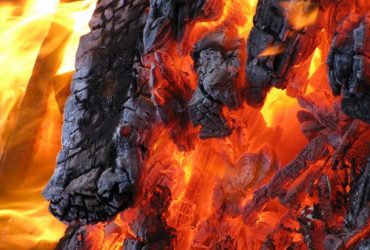How to Spot Quality Tuckpointing Work
If you’re facing the prospect of repairing the mortar on your beloved brickwork or simply trying to preserve the integrity of your masonry, you’ve likely heard about tuckpointing. Tuckpointing is not just a repair task; it’s an art form that requires skill and precision. With the proper workmanship, tuckpointing can prolong the life of your brickwork, enhance its appearance, and even increase the value of your property. Let’s explore the world of mortar and bricks and learn how to spot quality tuckpointing work.
Identifying Excellence in Tuckpointing
Not all tuckpointing jobs are created equal. To ensure your home gets the top-notch service it deserves, here’s what to look out for:
Consistency is Key
Uniformity across the entire job is one of the most telling signs of professional tuckpointing. It doesn’t matter if you’re looking at a vast wall or a small patch; the quality should be consistent throughout. Here are some things to pay attention to:
-
Color Matching: The new mortar should seamlessly blend with the existing one. A mismatch can be an eyesore and a sign of hastiness or lack of attention to detail.
-
Joint Size: Joints between the bricks should be uniform in size. Irregular joints can lead to early deterioration and a shoddy appearance.
The Finish Matters
After the tuckpointing is done, the finish of the mortar tells a story. A skilled tuck pointer will leave behind a smooth, compacted joint that resists water penetration and stands up to the elements.
Durability and Protection
The whole point of tuckpointing is to protect your bricks from weather damage and decay. Quality work will employ the right type of mortar mix, which ensures durability. The mortar needs to be appropriate for the specific type of brick to avoid damaging the masonry with a mix that’s too hard or too soft.
Spotting Red Flags in Tuckpointing
Now that we know what good work looks like let’s talk about the signs of a bad tuckpointing job. Keep an eye out for these red flags:
Cracking or Crumbling Mortar
If you spot mortar that’s already showing signs of distress soon after the job is done, that’s a bad omen. Either the mortar mix was subpar, or the application technique was flawed.
Excessive Mortar on Brick Faces
Messy work is not just unsightly; it also suggests a lack of care during the process. Excessive mortar smeared across the brick face can trap moisture and lead to brick damage over time.
Choosing the Right Contractor for the Job
One of the wisest moves you can make is selecting a specialized Chicago tuckpointing contractor. With their localized expertise, they’ll be familiar with the region-specific challenges and materials best suited for your brickwork.
Finding a professional whose work speaks for itself is important. Here are some tips:
-
Check for licenses and certifications to ensure they’re qualified.
-
Look at their portfolio of completed projects. It should impress you.
-
Read reviews and testimonials from past clients.
-
Ensure they communicate clearly and provide a detailed estimate.
Questions to Ask Your Tuckpointing Expert
Choosing the right tuckpointing professional is crucial. During the vetting process, asking the right questions can provide valuable insight into their workmanship and business ethics. Ensure you’re making an informed decision by posing these essential queries to your potential contractor:
-
Color Match Precision: “What steps do you take to ensure the mortar color matches my existing brickwork perfectly?”
-
Mortar Mix Selection: “Could you describe the mortar mix you plan to use and its suitability for my specific type of brick?”
-
Cleanliness Measures: “What are your strategies for maintaining a clean work site and protecting my property during the tuckpointing process?”
-
Proven Track Record: “Can you provide references or photos of recent jobs that demonstrate the quality of your work?”
Maintenance Tips for Your Tuckpointing
Quality tuckpointing isn’t a one-and-done deal. To keep it in top shape, here are some maintenance tips:
Regular Inspections
Don’t wait for visible signs of degradation. Regularly inspect your masonry for early signs of mortar failure.
Cleanliness is Crucial
Keep your brickwork clean. Dirt and grime can harbor moisture and conceal issues that would otherwise be noticeable.
When searching for someone to trust with the bricks you love, consider a masonry contractor in Chicago, IL. Their proximity allows for easy follow-up and routine maintenance checks.
Address Damage Promptly
If you notice any damage, don’t delay repairs. Prompt tuckpointing can prevent a minor issue from becoming a major, more costly problem.
The Bottom Line
Spotting quality tuckpointing involves noticing consistent color, joint size, and a durable finish. Beware of signs like cracking or sloppy work. Choosing the right tuckpointing professional is crucial for the longevity of your masonry. Maintain it with regular check-ups, and reward yourself with enduring brickwork that not only holds history but also continues to adorn your home with structural beauty and worth.





